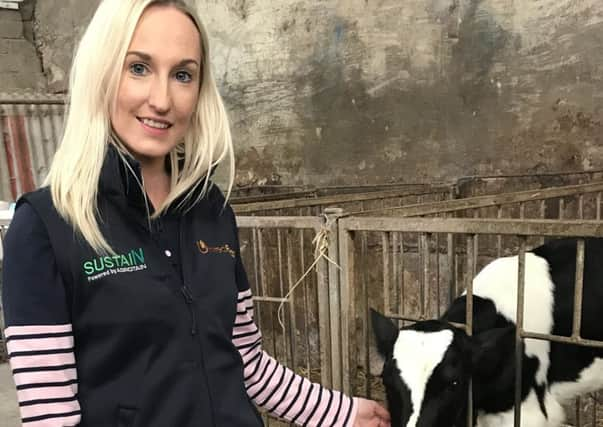Management and feeding of today’s calves affects your herd’s future performance


Though 24 months of age at first calving is well documented as the most profitable.
This is due to a combination of better fertility and more milk produced.
Advertisement
Advertisement
We know 24 months is the goal, but it’s crucial to assess how many heifer calves are missing that target in your herd, and more importantly why.
Much of the concept of metabolic programming still needs to be understood but so far research suggests that nutrient intake pre and post-natal, and health status in the first two months of life can alter gene expression.
Numerous studies have shown evidence that greater growth pre-weaning positively influences the capability for milk production throughout the animal’s lifetime.
Growth, not just in terms of bodyweight but also organ development; notably the liver, which I class as the powerhouse of the cow, and of course mammary tissue.
Advertisement
Advertisement
As the optimal window to maximise genetic capacity is primarily the first 60 days of life, and growth pre-weaning is largely influenced by milk consumption, due to the cost of milk replacer versus starter feed it’s not unreasonable to assume that feeding more milk replacer is expensive.
However, if you consider cost per weight gained, then pre-weaning is in fact the cheapest period to obtain growth.
In the first one to three months of life calves have a feed conversion efficiency (FCE) of between 50 and 60%, ie for every 100g consumed they gain 55g in bodyweight.
By 11 months of age FCE drops to 10%, so you need to feed 550g of feed to gain the same 55g of bodyweight.
Advertisement
Advertisement
With the aim of having heifers in calf by 15 months, breeding should begin at 13 months, where they should be 55-60% of their mature body weight.
If heifers need to play catchup to reach this target it is much less cost effective than earlier gains.
On that note, concentrate, straw and water intake play vital roles in rumen development to help the calves continue in their growth trajectory post-weaning.
Milk is a feed, not a drink and calves should be provided with clean, fresh water along with fresh calf starter feed from day three of age to encourage starter intake and drive rumen development.
Advertisement
Advertisement
Access to clean fresh straw should also be available from this young age too.
For further information on calf rearing management or United Feeds Accelerated Heifer Rearing Programme contact your local United Feeds Adviser.